
ادامه مطلب…

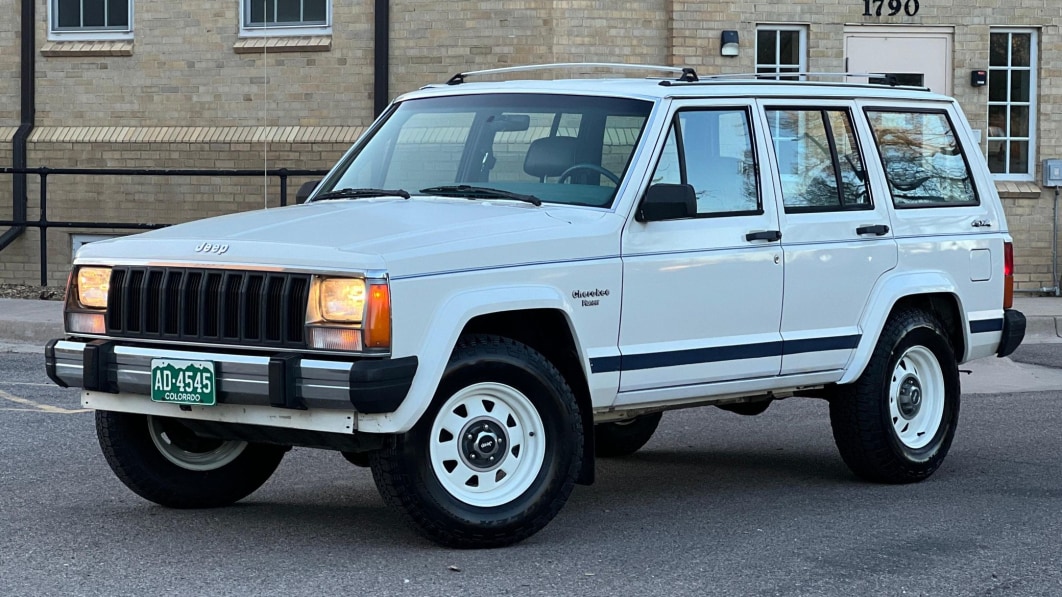
We have the original Jeep Cherokee to thank (or blame) for the crossover’s rise. Released for 1984, and called XJ internally, the model gained a loyal following by bridging the gap between family-friendly station wagons and burly body-on-frame SUVs. Many early XJs were driven into the ground, heavily modified, or chewed alive by rust, but a clean-looking example with cool options has popped up on Cars & Bids.
Jeep may have drawn inspiration from existing four-wheel-drive cars when it started developing the XJ. Subaru had offered wagons with four-wheel-drive for years, and American Motors Corporation (AMC), which Jeep was part of, had managed to carve out a niche for the four-wheel-drive Eagle wagon. Regardless, the idea was to downsize the Wagoneer-derived Cherokee into a more daily-drivable vehicle without losing off-road capability. The brand notably shifted away from body-on-frame construction and created a new architecture called Uniframe.
By downsized, we mean downsized. The original, Wagoneer-based Cherokee measured 183.5 inches long, 75.6 inches wide, and 65.9 inches tall, and it weighed 3,764 pounds. The XJ Cherokee posted numbers of about 165, 70, and 63, respectively, and it tipped the scale at approximately 2,900 pounds. It was available with two or four doors (most of its rivals were two-door-only), which made it well-suited to family-hauling duties. Jeep’s paid bet off: The XJ-generation Cherokee nearly doubled the brand’s sales about a year after it went on sale.
The example listed on Cars & Bids is the Pioneer model, which was positioned a notch above the base trim in 1986. It’s finished in Olympic White with a blue cloth interior, it’s riding on body-colored 15-inch steel wheels, and it was ordered with swing-away spare tire carrier that Jeep offered as an option on early models. It’s nearly unmodified and it appears to be in fairly good shape for an off-roader that’s quickly approaching its 40th birthday. Effortlessly rugged, it perfectly illustrates what the term “SUV” meant to many drivers in the middle of the 1980s, and it will certainly strike your nostalgia chord if you spent any amount of time in the nation’s mountainous regions in the 1990s.
Jeep buyers had three engine options to choose from in 1986. The base engine was a 2.5-liter four-cylinder rated at 117 horsepower and 135 pound-feet of torque. From there, customers could take the XJ in two wildly different directions. One option was a 2.1-liter turbodiesel four-cylinder borrowed from Renault (remember: AMC was under French control for years) and tuned to develop 85 horsepower and 132 pound-feet of torque. Alternatively, a General Motors-sourced 2.8-liter V6 rated at 115 horsepower and 150 pound-feet of torque was offered.
(Yes, the four-cylinder made more horsepower than the six. This was the 1980s; ’nuff said).
The 1986 example on Cars & Bids is powered by the six-cylinder, which is widely considered to be the more desirable of the three options. The output reaches the rear or the four wheels through a five-speed manual transmission and a two-speed transfer case. Here again, this is how you’d want to configure one of these. The other transmission options for 1986 were a four-speed stick and a three-speed automatic.
Jeep made numerous changes to the XJ-generation Cherokee during a production run that ended in 2001. The famous 4.0-liter straight-six replaced the 2.8-liter V6 for 1987, and the 1997 model year brought a new look that the Cherokee wore until it retired — in the United States, at least. Production continued in China into the 2010s. While the XJ was showing its age in the latter years of its American life, it remained a reasonably popular entry into a segment it helped create, and the nameplate was part of Jeep’s portfolio through the 2023 model year.
Bidding on the 1986 currently stands at $1,155 with six days left in a seven-day auction, so there’s plenty of time for that figure to rise. And, this is a no-reserve auction so the highest bidder will take home a cool and relatively early example of one of Jeep’s most influential models.

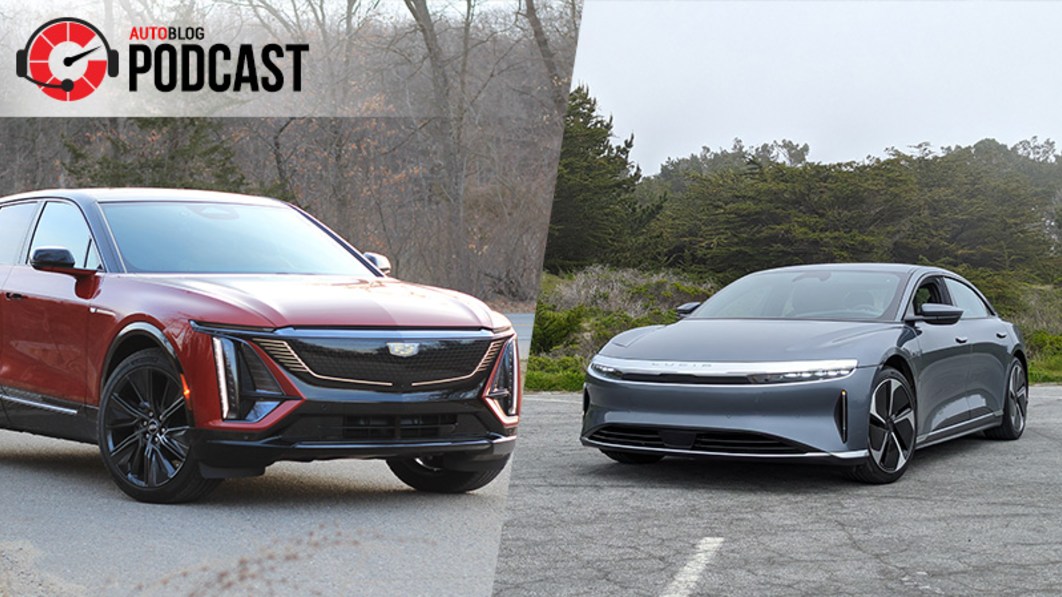
In this episode of the Autoblog Podcast, Editor-in-Chief Greg Migliore is joined by Road Test Editor Zac Palmer. The two kick things off with a loaded review section, starting with the 2024 Cadillac Lyriq Sport 3 then moving along to the 2024 Hyundai Santa Fe Calligraphy. After that, they dig into the Lucid Air lineup, as Zac just returned from a week at Lucid HQ driving all of the Air models. They wrap up the review section by digging into what they think of our long-term Mazda CX-90 PHEV’s powertrain. This week’s news includes discussion about Ford’s 60th Anniversary Mustang, the Tesla Cybertruck’s accelerator pedal issues and GM’s move away from the Renaissance Center. Lastly, the two spend a listener’s money.
Send us your questions for the Mailbag and Spend My Money at: [email protected].
Autoblog is now live on your smart speakers and voice assistants with the audio Autoblog Daily Digest. Say “Hey Google, play the news from Autoblog” or “Alexa, open Autoblog” to get your favorite car website in audio form every day. A narrator will take you through the biggest stories or break down one of our comprehensive test drives.
Related video:

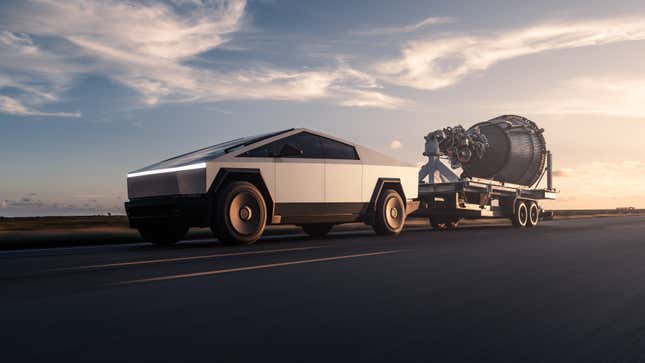
Tesla issued a recall for every single Cybertruck built thus far, as well as a stop-sale that lasted nearly a week, and it’s something that can’t be solved with an over-the-air update. Apparently assembly line workers used slippery soap to get the truck’s throttle pedal pad onto the pedal, and leftover soap was causing the pad to slip off and get stuck at wide open throttle. Thankfully the truck cuts acceleration when you press the brake pedal, so hopefully there weren’t any injuries caused as a result of the issue. Regardless, Tesla is currently trying to figure out a fix for the pedal slip off, up to and including affixing the cover with additional hardware.
The cause of the issue, as described by Tesla to the NHTSA:
An unapproved change introduced lubricant (soap) to aid in the component assembly of the pad onto the accelerator pedal. Residual lubricant reduced the retention of the pad to the pedal.
Who among us could have predicted such an issue?
Going back to the drawing board, Tesla says it will “at no charge to the customer,” replace the accelerator pedal “such that the assembly meets specifications and ensures sufficient retention force between the pad and accelerator pedal to prevent the pad from dislodging.”
According to The Autopian, Tesla’s fix seems to have been simply affixing the pedal pad to the pedal with a rivet. This wouldn’t be the first time Tesla has simply gone to the hardware store to fix its cars before delivery. It seems pretty par for the course considering the company built cars in a tent.
Tesla says it is not aware of any accidents caused by the slipped throttle pedal pad, though it might help explain some.

Tesla very much wants you to think that it is the cleaner alternative to those dirty, polluting gas cars. When you bought a Model S, you were helping save the planet, they said. However, Tesla hasn’t always done the best job complying with local environmental regulations, and according to the Houston Chronicle, it’s using a new state law to get its Texas factory removed from Austin’s environmental authority.
The factory, which is located outside of Austin, Texas near the city’s airport, was part of the city’s “extraterritorial jurisdiction,” meaning Austin environmental laws still applied. Considering its location on the Colorado River, it makes sense that the city has strong regulations to keep its water clean and prevent flooding. Unlike Austin, Travis County’s environmental regulations are more lax.
The city has since confirmed to the Houston Chronicle that Tesla did request “for land associated with Tesla’s operations” to be removed from Austin’s extraterritorial jurisdiction and that it met the requirements to do so. “Releasing properties from the ETJ does impact the city and future city residents,” the city said in a statement. “The city of Austin’s environmental regulations are more protective of water resources than unincorporated Travis County.”
The decision to leave Austin’s ETJ is ironic considering Musk initially claimed the factory would “basically be an ecological paradise – birds in the trees, butterflies, fish in the stream.” As Alexia Leclercq, policy director for People Organized in Defense of Earth and her Resources, told the Houston Chronicle, it’s also consistent with Tesla’s approach to protecting the environment since it began construction on the 2,500-acre facility.
“They have this pattern of trying to have as few regulations apply to them as possible,” she said, emphasizing that the ecological paradise Musk initially promised is “nowhere to be found.”
Once removed from Austin’s ETJ, it won’t be a free-for-all for Tesla, though. It will still have to comply with state regulations that limit how much it can pollute the river and the extent to which it can damage nearby wetlands. It is still Texas, though, so good luck with that, Austin.

The first new Subarus sold in the United States were microscopic kei cars brought over by Malcolm Bricklin in 1968, and they were followed by slightly larger (but still comically tiny) Leones a few years later. Bigger and better-equipped Leones followed during the 1980s, along with the sleek XT sports car. When the XT’s successor appeared here for the 1992 model year, it was named the SVX and it looked wild! Today’s Junkyard Gem is one of those first-year SVXs, found in a Colorado car graveyard.
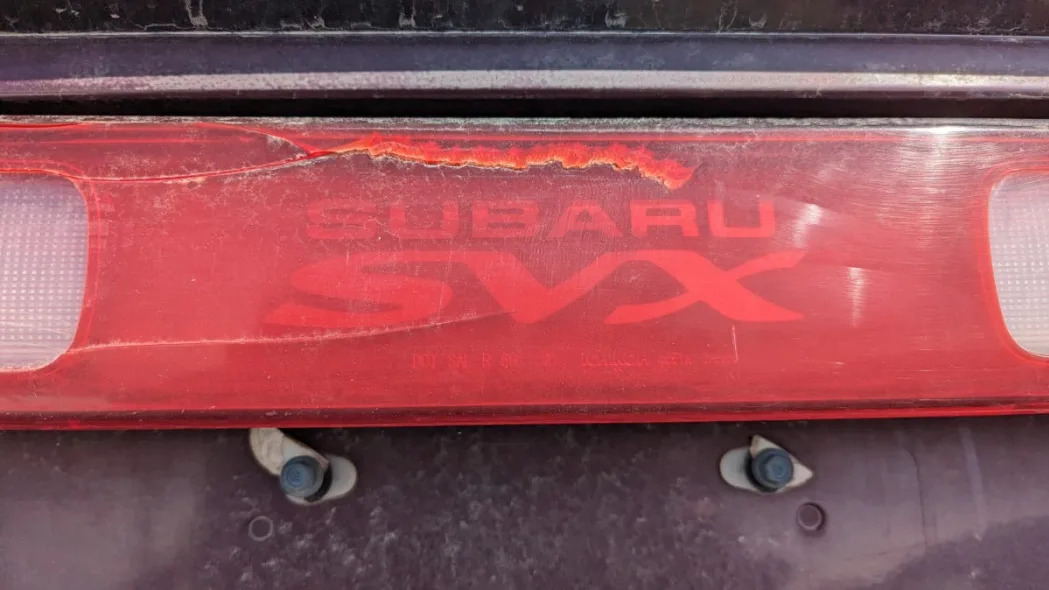
In Japan, the XT and SVX were known as the Alcyone XT and Alcyone SVX, named after the brightest star in the constellation Subaru uses in its logo.
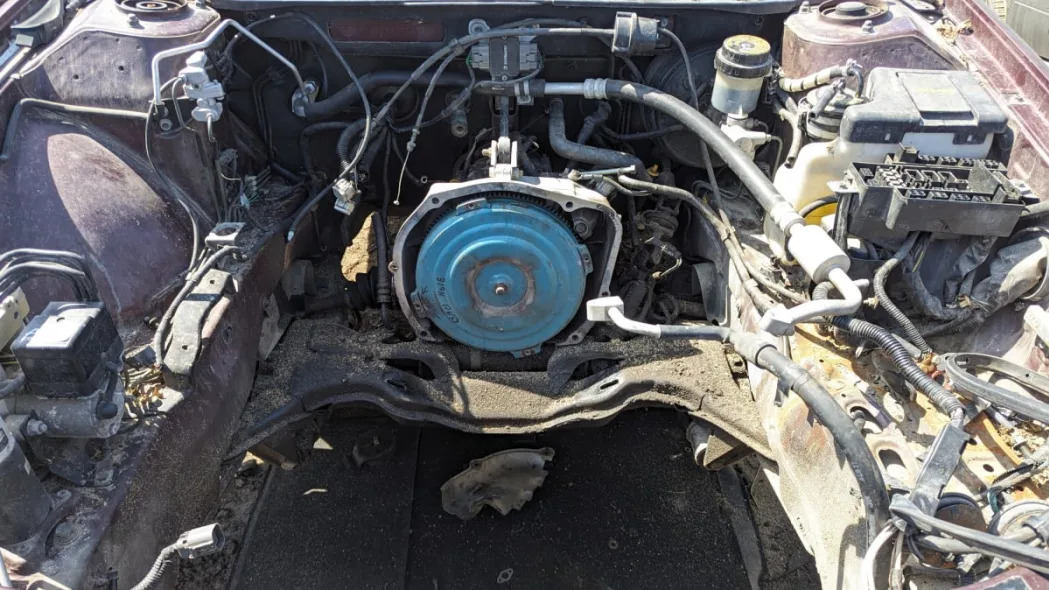
The 1988 XT6 was the first Subaru sold here to get a six-cylinder engine, and its SVX successor also had boxer-six power. Some junkyard shopper bought this car’s engine before I arrived, but it was a 3.3-liter DOHC unit rated at 230 horsepower and 228 pound-feet.

At the time the SVX was designed, Subaru didn’t have a manual transmission that could handle the 3.3’s output, so every one of these cars came from the factory with a four-speed automatic transmission.
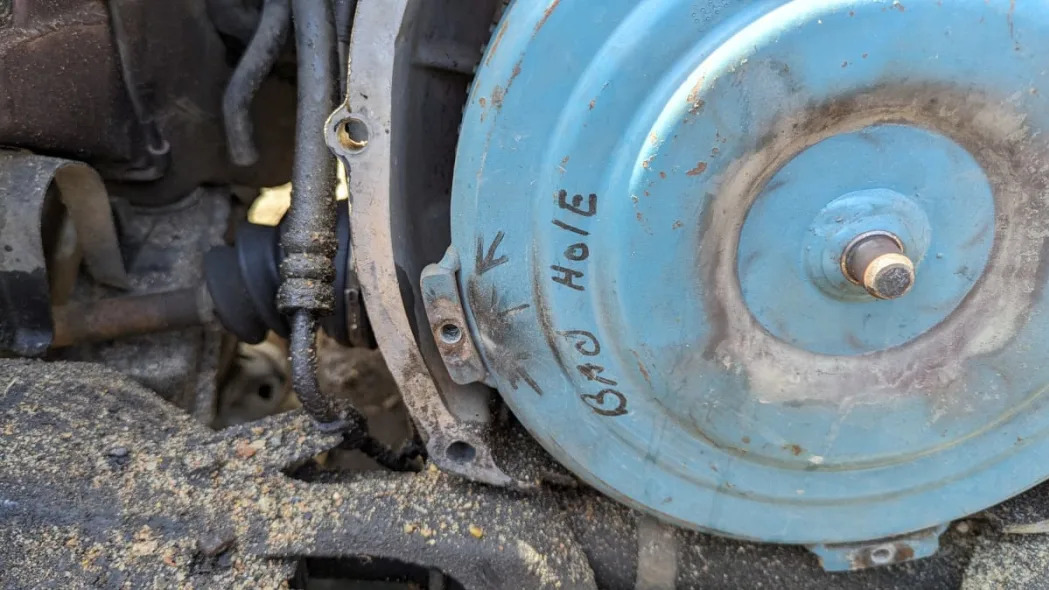
These transmissions proved troublesome in the real world, though Subaru eventually made automatics survive reasonably well behind its H6 engines.
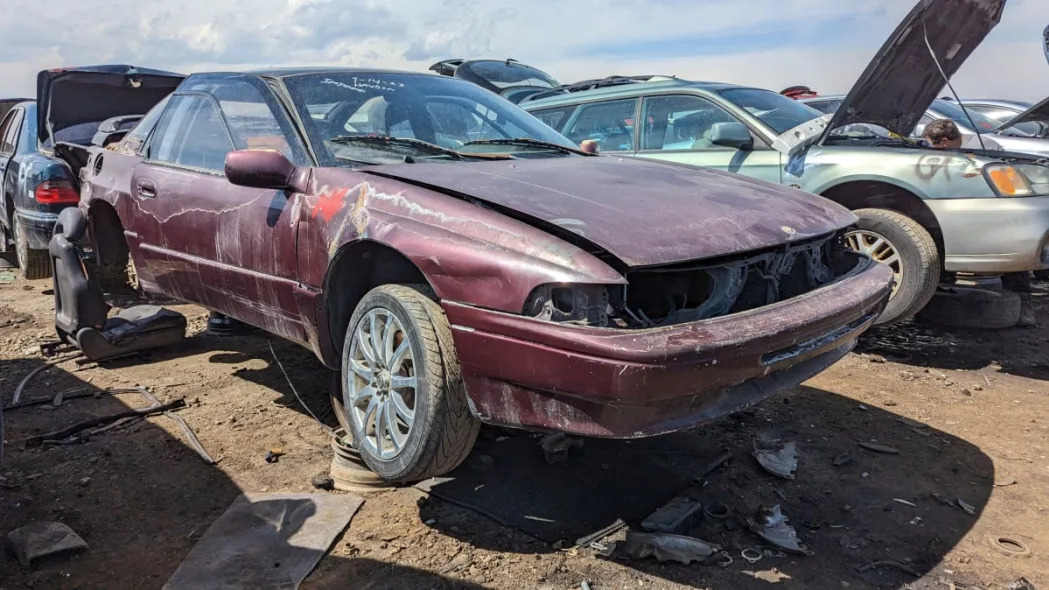
For 1992 and 1993, all U.S.-market SVXs were equipped with all-wheel-drive; front-wheel-drive versions were available for the 1994 and 1995 model years (after which all Subarus sold here had AWD as standard equipment).

The SVX was styled by Giorgetto Giugiaro, and it turned heads (sometimes in admiration, sometimes in confusion) with this window-within-a-window side glass treatment.
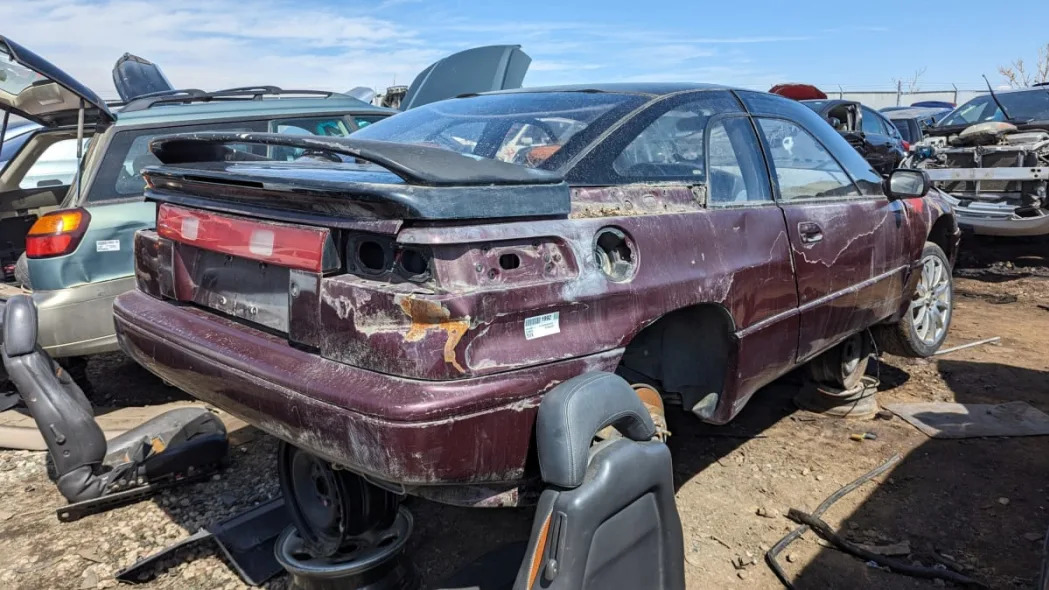
The SVX was by far the most expensive new Subaru Americans could buy during its 1992-1997 sales run. This car is a top-trim-level LS-L model, so its MSRP would have been $29,250 (about $65,728 in 2024 dollars). Meanwhile, the 1992 Subaru Justy started at just $6,445 ($14,483 after inflation).
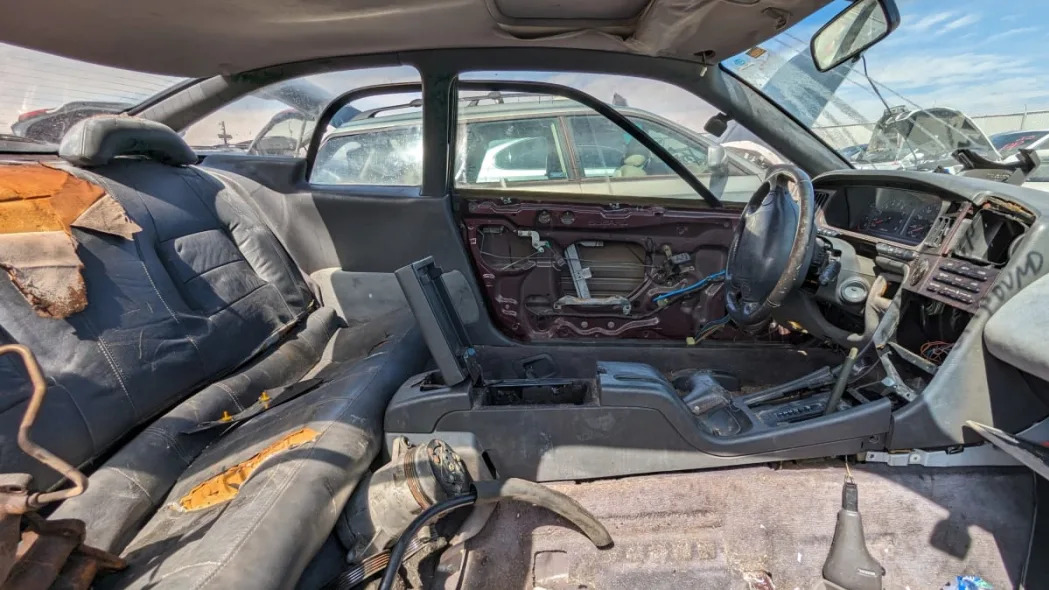
After SVX sales ceased, Subaru gave up on selling weird cars here and got busy printing money by offering Americans sensible all-wheel-drive machines suitable for commuting and/or camping.
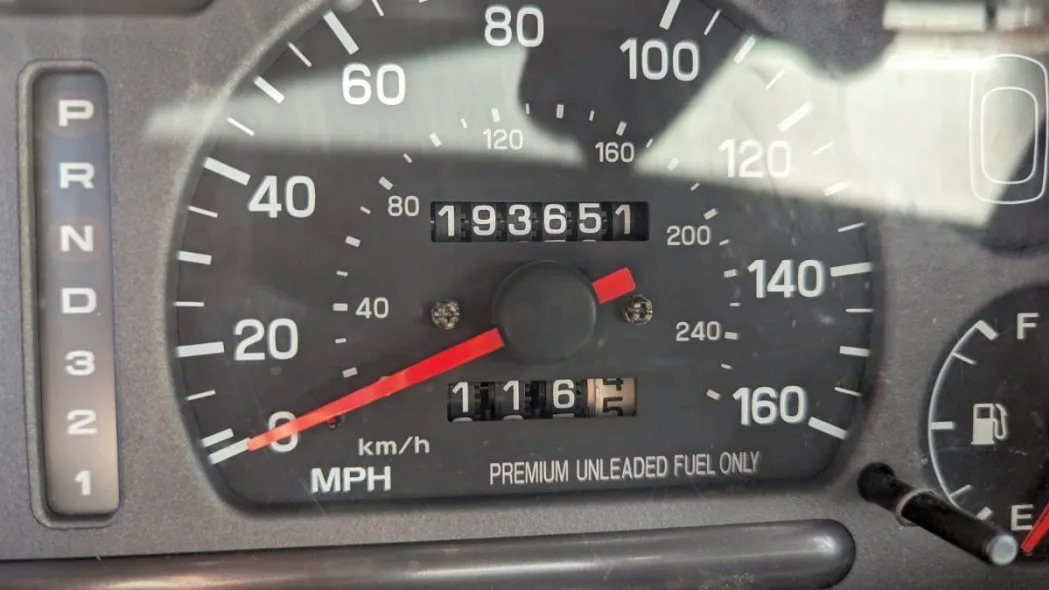
This one nearly reached 200,000 miles during its career, which is respectable though nowhere near the mileage of the best-traveled Subaru I’ve documented in a junkyard.
Tell me how it’ll do in Chicago!
It can reach speeds in excess of 140 miles per hour … but how important is that with extended urban gridlock and gas at $1.38 a gallon?
You’d have thought the Alcyone SVX’s home-market TV commercials would have featured screaming tires and roaring engines, but that wasn’t the case.

ما تویوتا لندکروز 2024 رانده شدیم، مازراتی گرن کابریو فولگور 2025 معرفی شد و مشخصات Lucid Air Grand Touring 2024 منتشر شد. این هفته در معکوس است، درست اینجا در Motor Authority.
ما تویوتا لندکروز 2024 را سوار شدیم و متوجه شدیم که آن را به جذابیت یکپارچهسازی با سیستمعامل تغییر می دهد. پلاک نمادین به عنوان یک آفرود کوچکتر، ارزان تر، متمرکزتر با پیشرانه هیبریدی بازمی گردد. مجموعه ای متفاوت از خریداران را نسبت به قبل هدف قرار می دهد.
فورد شصتمین سالگرد موستانگ را جشن گرفت که شامل اعلامیه هایی درباره بسته 60 سالگی، طراحی جدید خوشه سنج دیجیتال دهه 1960 برای مدل های 2024 و مرکز تجربی جدید موستانگ بود. این خودروساز همچنین نسخه جدیدی از موستانگ را معرفی کرد که در سال 2025 معرفی خواهد شد.
مازراتی GranCabrio Folgore 2025 معرفی شد. گرند تورر لوکس، معرفی عصر کانورتیبل برقی است. هنگامی که GranCabrio Folgore اواخر امسال عرضه شد، مازراتی گفت که قیمت آن کمی بیش از 200000 دلار خواهد بود و احتمالاً بردی در حدود 250 مایل خواهد داشت.
آئودی RS 6 E-Tron 2026 برای اولین بار آزمایش خود را در نوربرگ رینگ آغاز کرد. این سدان لوکس با کارایی بالا، مدل پرچمدار سری الکتریکی A6 E-Tron خواهد بود. گلگیرهای عریض تر، دیفیوزر عقب بزرگتر، سیستم تعلیق پایین تر و کیت ترمز بزرگتر همگی از ویژگی های معمول مدل های RS هستند. انتظار می رود اولین نمایش در اواخر امسال یا اوایل سال آینده برگزار شود.
مدل 2024 Lucid Air Grand Touring با پمپ حرارتی عرضه شد که به سدان برقی کمک میکند تا برد بیشتری را در هوای سرد ارائه دهد. موتورها، شیمی باتری و سیستم مدیریت گرما همگی تغییراتی را دریافت می کنند تا اطمینان حاصل شود که انرژی کمتری به عنوان گرما هدر می رود. علیرغم تغییرات انجام شده، ایر گرند تورینگ در قیمت 111400 دلاری که قبلاً اعلام شده بود، شامل هزینه مقصد 1500 دلاری ثابت می ماند.

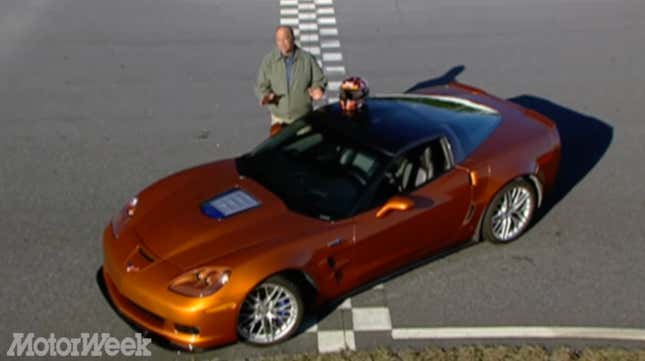
Does anyone else remember early 2009? Obama was just inaugurated, Circuit City was closing, Bernie Madoff pleaded guilty and I was in the sixth grade looking for my first girlfriend. While all that was happening, though, General Motors was getting ready to launch its masterpiece: the C6 Chevy Corvette ZR1. To me, it is the absolute peak of Corvettes, and now we get a chance to relive its early days through the latest MotorWeek Retro Review.
Like all MW reviews, this one starts off with our hero John Davis standing outside a copper-colored (remember when every car was copper?) ZR1 using his outside-voice-all-the-time voice. He lays out the specs and highlights: 638 supercharged horsepower, adjustable suspension and Brembo brakes. Babes, this is “as close to a street-legal Corvette race car as you can get.” Luckily, MotorWeek brought the ZR1 to a race track to push it to the limits. That’s right folks, they’re at the Roebling Road Raceway in Bloomingdale, Georgia.
We even get something of a proto-Retro Review in the Retro Review. President Davis talks about all of the other Corvettes they’ve called the best of all time, dating back to the 1990 Corvette ZR1. He then declares the 2009 ZR1 the “ultimate production Corvette.”
From there we get into the C6 ZR1’s iconic hood window thing, which everyone thought was tacky at the time, but I absolutely love. What a motor that lay beneath it: a 6.2-liter supercharged LS9 V8 that put out 638 horsepower and 604 lb-ft of torque all routed through a six-speed manual transmission. Put those things together and you get a 3.5 second 0-60 time. These numbers are strong today, so 15 years ago they were pretty much out of this world. At the time, the ZR1 apparently set the fastest lap record around Roebling Road ever tested by MotorWeek. It beat out all sorts of high-end sports cars, and even the Ferrari Enzo, for the crown. Despite all that power and performance, Davis said the ZR1 is still the easiest-to-drive high-performance car to date “bar none.” Impressive stuff.
I have always loved the C6 in general, but the ZR1 – for obvious reasons – has always been my very favorite. I’m just glad to see that THE John Davis agrees.

Amazon MGM Studios aired the first season of its new TV show “Fallout.” It’s based on the long-running video game series that takes place in an alternative universe based on 1950s ideas of futurism, with it all leading up to all-out thermonuclear war and the aftermath. So to fit the look, any scenes that take place before the nuclear war feature ’50s dress, political ideology, and, of course, automobiles. Most of the cars in the show are actual production vehicles from the time period. One of the main characters, Cooper Howard, drives a gorgeous yellow Kaiser Darrin, and there’s even a scene that showcases the car’s super cool sliding pocket doors. A Messerschmitt tandem bubble car also makes an appearance (and there are lookalikes that you can find in the game). But the most interesting and unique car shows up in the first episode, and amazingly, it’s hidden in the background of various shots.
It doesn’t take long to spot it, as it appears in the first few minutes of the show. These scenes start at a birthday party just before the bombs drop, and it’s most visible in the shot at top when Howard takes off on horseback with his daughter in search of safety. They race past a big bright red roadster of some sort, with gleaming side-exit exhaust and a rear fin reminiscent of some period race cars. That vehicle isn’t made specifically for the show. It’s the Plymouth XNR concept from 1960 – or at least it’s a replica; more on that in a minute.
The actual 1960 Plymouth XNR concept has a heaping helping of hypnotizing history. It was designed by Virgil Exner (hence the XNR name), who worked at Pontiac, Studebaker, and most famously, Chrysler Corporation. He started at Chrysler with concept cars, and the first production cars credited to him were the “Forward Look” models that included the original C-300 that would eventually inspire the 2005 Chrysler 300.
The styling is seriously wild. As we mentioned, it has asymmetric cues from race cars of the time, but amplified with the hood scoop that leads into a long rising cowl. The exhaust only comes out on the driver side, and then the rear has a sort of chrome star tying the rear fin in with the pseudo bumper. The radical looking fenders also appeared on the original 1960 Valiant, which was quickly placed under the Plymouth brand, with Dodge getting its own version called Lancer. The XNR even uses the Valiant’s chassis according to Motor Trend (which has an excellent, detailed look at the car from the sadly defunct Motor Trend Classic magazine).
On top of the wild looks from designer royalty, the XNR was actually a fully functional car. It had a 170-cubic-inch (or about 2.8L in metric displacement) 250-horsepower inline-six with a three-speed manual transmission and rear-wheel drive. And while it looks as though it only has a driver seat, there is a passenger seat hidden under a removable body panel. It also featured independent front suspension with torsion springs and a live rear axle with leaf springs. Those rear leaf springs were even tidily fit to the curve of the rear body (or probably more likely, the body fit to the springs)

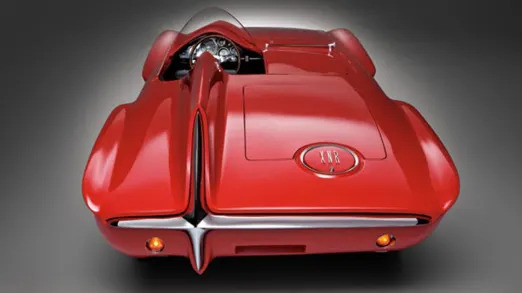
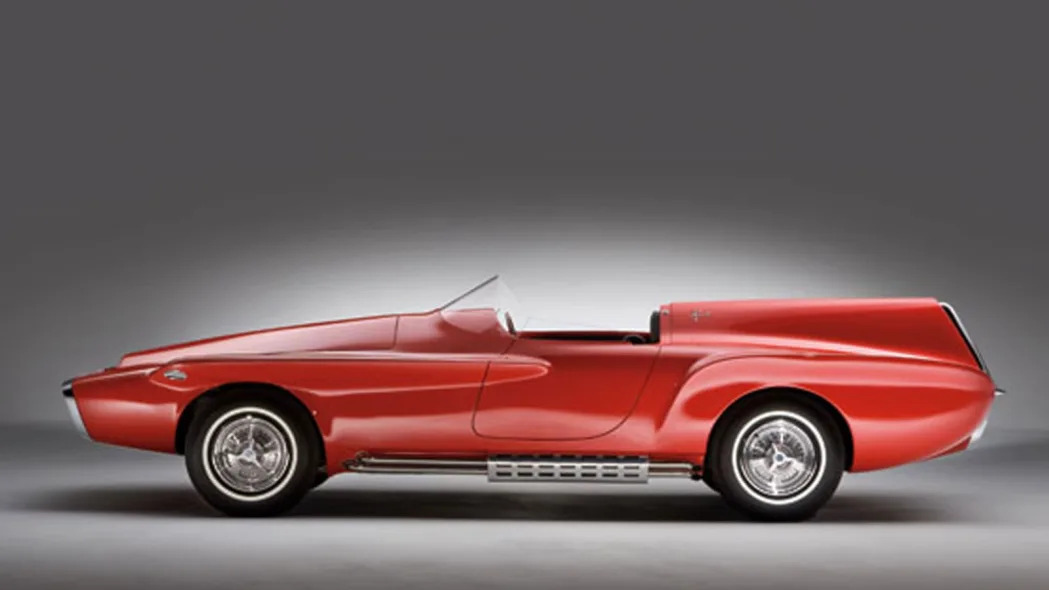
When Chrysler was done with the car, it began a wild journey, first going to Italy and Carrozzeria Ghia, the company that built the body. It eventually went to multiple other owners, including at one point the Shah of Iran. It was eventually found by Karim Edde, who discovered it in Lebanon in the ’80s and had to move it about to keep it safe as civil war broke out. It was then restored by RM Restorations, part of what’s now the RM Sotheby’s auction house, in the late 2000s. Following its restoration, it was shown at Pebble Beach in 2011 where it won the Gran Turismo award, which meant it was added as a drivable car in the video game series including the latest “Gran Turismo 7.” It’s actually quite fun to drive, especially with the high-revving engine. The game shows redline as being just shy of 8,000 rpm.
And that brings us to today, where the car has appeared in “Fallout.” And this is where we’re left with questions that haven’t been fully answered. You see, in addition to the original XNR, at least one replica has been produced by Gotham Garage, the custom car shop featured in Netflix’s “Car Masters: Rust to Riches.” That replica is now at the Petersen Museum in Los Angeles. We reached out to the PR agency for Petersen to ask if their car was used for the show, and they said it was not. HotCars reported that Gotham Garage was looking at building another replica, but it’s not clear if that ever materialized. We also reached out to Amazon for details but never got a reply. So either the car in the show was the original, or this is the mysterious second replica. There’s also the outside chance it’s computer generated, but we doubt it. Besides looking especially convincing in multiple shots and angles, it would seem odd to pick this very specific car for a CGI background piece.
Regardless, the XNR, be it the original, CGI or some faithful reproduction on Gotham Garage’s part, is a really cool car, and it’s neat to see it appear in a big TV show (and a good one, coming from this fan of the Fallout games) from one of the major studios. And we’re always happy to talk about a sweet ride.

Folks in the United Arab Emirates are known for doing absolutely wild stuff with their cars, but this could take the cake. You see, the UAE has had a record amount of rainfall recently, and it has led to a whole lot of flooding in Dubai. But, that didn’t stop one Pagani Utopia driver from getting where they needed to go in their $2 million hypercar.
Luckily for us, a 30-ish second video of this hero’s journey was posted to YouTube. In it, we can see the driver hesitate before taking his six-speed manual 6.0-liter AMG V12-powered work of art through the flooded road. As it turns out, the 860 horsepower it puts out was more than enough to ford the sort-of-shallow water. Granted, the water only seemed to reach up to the bottom of the car’s bumper, but still, man. It’s a fucking Pagani Utopia. Do you know how much those cost to fix? A hell of a lot.
Listen, I guess if you’re the type of person who can afford a Pagani Utopia, you don’t really care about money – or anything really. What’s a little water damage to your one-of-99 hypercar if you’ve got literally unlimited money? I can tell you, it isn’t much.